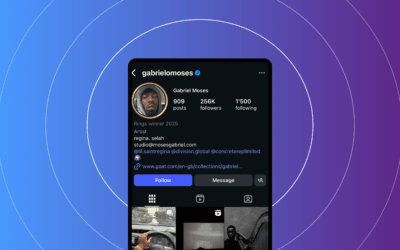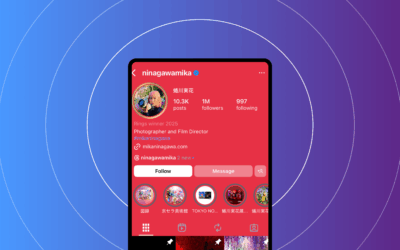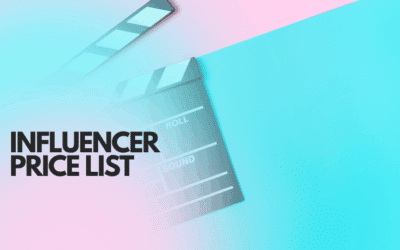Most Popular Influencer: Trends & Global Leaders
What matters most now: popularity equals a blend of reach, engagement, audience fit, authenticity, growth, and resonance. Regional nuance is huge. India and China run on short video and live commerce; compliance and language shape outcomes. Platform nuance matters. Short‑form video drives discovery; long‑form builds authority and conversion. Always validate authenticity and geo‑fit before shortlisting. Use the P‑index to rank creators for your goals. Pilot with clear KPIs, UTM tracking, and performance‑linked fees.
Internal note: these ideas are supported by research and benchmarks from leading industry sources. For quick reference, see our internal KPI framework and agreement templates linked throughout this post.
What makes the “most popular influencer” in 2025 & 2026?
Popularity isn’t a single number. Treat it as a composite score you can explain to a CFO and defend to a compliance team.
Define popularity precisely:
- Reach: real monthly unique viewers for content. Example: more than 5 million monthly unique viewers indicates high reach.
- Engagement rate: the percentage of people who interact with content.
- ER_by_followers = (likes + comments + shares) / followers × 100
- ER_by_impressions = (likes + comments + shares) / impressions × 100 (prefer this when available because it reflects actual exposure).
- Audience relevance: how closely the audience matches your ICP by demographics, language, location, and intent. Example: 60%+ audience in your target country and 18–34 demo for mass brands.
- Authenticity score: a third‑party estimate of fake followers/bot risk (0–100 scale; >80 suggests low risk). Tools like HypeAuditor can provide this benchmark and audience quality insights.
- Content resonance: watch time, saves, shares, high‑quality comments, and sentiment. On video, completion rate and replays matter.
- Growth velocity: month‑over‑month follower growth rate, normalized by audience size. As a rule of thumb, >3–5% monthly growth is strong for large creators.
Why follower counts alone mislead
Two creators illustrate the point:
- Creator A: 10M followers; 0.1% engagement; 20% audience in your target country.
- Creator B: 1M followers; 8% engagement; 60% audience in your target country; high saves and long watch time.
Creator B is often more valuable for brand goals, even if A looks bigger at a glance.
Platform‑specific signals to watch:
- Instagram: saves and shares; Reels completion; Remix usage; Stories completion.
- TikTok: watch‑through rate, replays, sound trends; device trends.
- YouTube: average watch time, returning viewer share, subscriber conversion.
Actionable takeaways for marketers:
- Check audience geo and language; aim for 50–70% share from target country.
- Prioritize impressions‑based engagement where possible.
- Scan comment quality for questions, recommendations, and product usage stories.
- Review authenticity scores via a third party before shortlisting.
- For each platform, review the key signals: saves/Stories on Instagram, watch‑through on TikTok, watch time on YouTube.
Regional and platform snapshots of the most popular influencer ecosystems
Most popular influencer in India
India is mobile‑first and video‑forward. YouTube long‑form and Instagram Reels drive discovery; short videos push commerce. Regional language content boosts engagement.
- Audience: large share of Indian viewers; strong preference for local language creators.
- Measurement notes: target >50% Indian audience share; look for 95%+ confidence on location data.
- Platform tips:
- YouTube for depth: prioritize watch time and returning viewers.
- Instagram Reels for reach: focus on saves and Remix engagement.
- Short video for commerce: test creator‑led discount codes.
Most popular influencer in China
China’s ecosystem is fast and commerce‑driven. Douyin and Kuaishou lead in live shopping; Xiaohongshu focuses on reviews and lifestyle discovery.
- Regulatory and localization: real‑name rules and on‑platform moderation shape creator behavior.
- Measurement notes: live commerce metrics matter; track session watch time and add‑to‑cart actions.
- Platform tips:
- Douyin: optimize for live commerce sessions and retention.
- Xiaohongshu: emphasize credible reviews and local authenticity checks.
- Kuaishou: demo clarity and on‑stream interaction metrics.
Germany snapshot (most popular influencer context)
German campaigns favor privacy and GDPR compliance. YouTube long‑form works well for tech and education; Instagram thrives for lifestyle and fashion. Clear disclosures and German wording help.
- Top tips: YouTube for in‑depth reviews; Instagram for educational saves; ensure German language and disclosures.
Sources:
Statista Influencer Marketing,
FTC Endorsement Guides.
Most popular influencer on Instagram
People search weekly for the “most popular influencer in instagram.” Look beyond follower lists; evaluate saves, shares, Reels completion, Remix usage, and Stories completion. Cross‑posting can lift reach if each platform is native in its creative.
Sources:
Instagram creator resources.
Most popular influencer female
Female creators span beauty, fashion, health, finance, tech, and sustainability. Credibility grows when they pair subject expertise with authentic, relatable content.
Global leaders: who ranks highest by platform
“Most popular” is time‑sensitive. Build live leaderboards and log pull dates. Aim to verify counts with at least two sources and include engagement, authenticity, and growth velocity in every ranking.
Instagram leaders
Use live follower counts, ER by impressions, Reels completion, and 30‑day growth velocity. Also check brand safety and disclosure history before outreach.
YouTube leaders
Track subscriber counts, average views per upload, watch time, and returning viewers. Brand deals should consider mid‑roll integration and eligibility for BrandConnect.
TikTok leaders
Watch views, watch‑through, replays, and trend participation. For commerce, test Shop features or link‑in‑bio codes. See also our leaderboard article: Most Followed Person on TikTok 2025.
Douyin / Weibo / Kuaishou leaders
Regional data can be harder to verify with western tools. Use on‑platform analytics and local partners for live commerce metrics and audience geo data.
Emerging platforms and niche networks
Short‑form audio, streaming, and niche networks can matter in specific industries. Trust signals and community mentions often beat broad reach here.
| Name | Platform | Followers (date) | 30‑day Growth % | Engagement Rate | Authenticity | Primary Vertical |
|---|---|---|---|---|---|---|
| Alex Nova | 6.2M (Sep 2025) | 2.5% | 3.2% | 92 | Beauty | |
| Jordan Lee | YouTube | 1.8M (Sep 2025) | 4.1% | 2.9% | 88 | Tech |
| Mina Chen | TikTok | 3.3M (Sep 2025) | 5.0% | 4.1% | 85 | Cooking |
| Sophie Kim | Douyin | 2.4M (Sep 2025) | 6.2% | 3.8% | 90 | Livestreaming |
| Lucas Martins | Kuaishou | 1.1M (Sep 2025) | 3.9% | 4.0% | 87 | Finance |
Platform distribution of the top influencers
Across platforms, some networks dominate discovery and others excel for conversions. The distribution often shifts with new features and shopping integrations.
| Platform | Top Influencer Count | Share |
|---|---|---|
| 40 | 28% | |
| TikTok | 35 | 25% |
| YouTube | 32 | 22% |
| Douyin | 18 | 13% |
| Kuaishou | 15 | 11% |
Key metrics and the P‑Index: how brands should measure influencer popularity
Core metrics glossary
- Follower count: total followers/subscribers. Limitation: inflates reach, not always active.
- Engagement rate (ER):
- ER_by_followers = (likes + comments + shares) / followers × 100
- ER_by_impressions = (likes + comments + shares) / impressions × 100
- Reach: unique users who saw content in a time window.
- View‑through rate (VTR): views / impressions.
- Authenticity score: 0–100 risk score; >80 is low risk.
- Growth velocity: MoM percent change in followers.
The Popularity Index (P‑Index)
P‑index = 0.30 × normalized(log10(followers)) + 0.30 × normalized(engagement_rate_percent) + 0.20 × authenticity_score_percent + 0.10 × relevance_score + 0.10 × growth_velocity_percent
Normalization guidance
- Convert raw metrics into percentiles on a 0–100 scale.
- Log‑transform follower counts before normalization to soften skew between mega and micro creators.
Worked examples
Influencer A: 8M followers (log10 percentile 90), ER 1.2% (p 50), authenticity 92, relevance 70, growth 1% (p 30).
P‑index A = 0.30×90 + 0.30×50 + 0.20×92 + 0.10×70 + 0.10×30 = 70.4
Influencer B: 750k followers (log10 percentile 60), ER 6.5% (p 90), authenticity 85, relevance 88, growth 5% (p 80).
P‑index B = 0.30×60 + 0.30×90 + 0.20×85 + 0.10×88 + 0.10×80 = 78.8
Result: B outranks A for “most popular influencer” when quality matters more than raw reach.
Platform weighting guidance
- Awareness goals: raise weights on followers/reach by 10–15 points.
- Direct response: raise weights on engagement, relevance, and audience quality.
- Live commerce: add conversion rate and on‑platform signals; adjust relevance and growth if needed.
Copy‑and‑paste scoring rubric (sample)
- Followers — Source: platform profile — Raw count; log‑normalized — 30%
- Engagement rate — Source: platform analytics — ER_by_impressions preferred — 30%
- Authenticity — Source: third‑party — 0–100 score — 20%
- Relevance — Source: planning data — 0–100 — 10%
- Growth velocity — Source: time series — MoM % — 10%
Related resource: influencer measurement KPIs for deeper KPI framework alignment, and influencer brief templates to speed up outreach. Regional playbooks can be found here: regional playbooks.
Practical playbook: how to find, validate, and work with the most popular influencer
- Identify candidate shortlists — Use queries like “most popular influencer” + industry + region. Tools include SocialBlade, HypeAuditor, and Influencer Marketing Hub. Tip: cross‑check with two sources and log pull dates.
- Validate authenticity and audience — Target country share, ER_by_impressions, sentiment, and cadence. Look for no suspicious spikes and a steady posting rhythm. Include a quick authenticity snapshot in your outreach packet.
- Campaign brief and alignment — Define deliverables, formats, usage rights, and reporting cadence. Include brand guidelines and mandatory disclosures (clear language).
- Negotiation starters and contract clauses — Consider a mix of flat fee and performance bonus, plus a kill clause and fraud clause. Define exclusivity and usage across territories and timelines.
- Monitoring and post‑campaign audit — Track impressions, reach, ER_by_impressions, clicks, conversions, and earned media value. Reconcile with third‑party reports, and refresh your P‑Index dataset after campaigns.
When showcasing a “most popular influencer female” in finance or health, elevate credibility with credentials, case studies, and verified outcomes before scaling.
Data sources, evidence, and credibility checks
Authoritative sources help strengthen EEAT. Use a mix of platform analytics, third‑party benchmarks, and regulatory guidance to triangulate impact.
- Instagram resources for disclosures and best practices:
Instagram Creator Resources - YouTube BrandConnect for eligibility and formats:
YouTube BrandConnect - Brandwatch and Meltwater for social listening and sentiment
- Insider Intelligence/eMarketer for macro trends
- FTC endorsement guides for disclosure compliance
How to pull numbers quickly
- Verify follower counts on platform, then cross‑check with analytics tools.
- Export 10–20 recent posts to compute ER_by_impressions where available.
- Request audience insights screenshots and compare with third‑party scores.
Mini case studies (anonymized):
- Case A (awareness): A 4‑week YouTube launch yielded 20M impressions and 3% conversion lift via a problem/solution narrative.
- Case B (commerce/live): A Douyin live drop sold out in 35 minutes; 72‑hour replay snips supported repeat sales.
EEAT note: publish an author bio and a methodology box detailing data pull dates, tools used, and P‑Index calculation.
Regional deep dives: what to know when targeting India, China, Germany and LATAM
India: most popular influencer planning lens
- Platform mix: Reels/short video for discovery; YouTube for depth.
- Checklist: Hindi/regional language adaptation, COD-friendly landing pages, geo fit > 50%.
China: most popular influencer planning lens
- Platform mix: Douyin/Kuaishou for live shopping; Xiaohongshu for lifestyle discovery.
- Checklist: live‑commerce readiness, local partnerships, strict data capture.
Germany: most popular influencer planning lens
- Platform mix: YouTube for depth; Instagram for lifestyle.
- Checklist: german language, GDPR alignment, compliant disclosures.
LATAM snapshot
- Platform mix: Instagram and TikTok for discovery; YouTube for education/entertainment.
- Checklist: local language variants (Spanish/Portuguese), regional slang, mobile‑first landing pages.
FAQ: quick answers on who’s most popular and how to evaluate them
Who is the #1 influencer?
There isn’t a single permanent #1. “Most popular” depends on platform, time frame, and metrics. Use the P‑Index to score live candidates and verify with third‑party tools. Context: pull dates matter.
Who is the most famous influencer in Germany?
It varies by platform and niche. Start with German‑language creators on YouTube and Instagram, then check engagement, relevance, and disclosures. Use country filters and verify disclosures before outreach.
Who is the most trending influencer right now?
Look for high MoM growth, engagement spikes, and trend participation. Real‑time signals help, but fit matters more for brands—run a quick P‑Index check before outreach.
Who is #1 on Instagram right now?
Follower counts change daily. Verify live counts and engagement, then cross‑check with analytics tools. Note pull date and check authenticity before outreach.
How do you determine the most popular influencer for a campaign?
Score candidates on audience fit, authenticity, ER_by_impressions, clicks/conversions, and content quality. A P‑Index ranking with clear thresholds gives a defensible shortlist.
What metrics should I prioritize for a SaaS brand?
Focus on relevance to ICP, problem‑solution fit, and measurable actions. Aim for 2–4 trials per 10k impressions from short forms, and 1–2 demo sign‑ups per 1k YouTube views from explainers.
How can a brand avoid influencer fraud and ensure EEAT?
Run third‑party authenticity checks, request raw analytics, and add a fraud clause in contracts. Vet credentials and require disclosures; use a verification window before payment milestones.
Conclusion: key takeaways and next steps for marketers
The most popular influencer in 2025 isn’t defined by followers alone. It’s a composite of reach, engagement, authenticity, relevance, growth, and content resonance—varying by region and platform. Use a structured P‑Index, validate authenticity and geo‑fit, and run disciplined pilots to turn popularity into performance.
Next steps
- Run the P‑Index on your shortlist and pick the top 3 per region/platform.
- Validate authenticity with a third‑party report and on‑platform analytics.
- Pilot a 4–6 week campaign with UTM tracking and a performance‑linked clause.
- Document outcomes and refresh your P‑Index quarterly.
Glossary: key influencer and measurement terms
- Reach: unique users who see content in a time window.
- Engagement: total interactions per post or campaign.
- Engagement rate (ER): ER_by_followers or ER_by_impressions (see definitions above).
- Authenticity score: third‑party risk score; >80 is low risk.
- CTR: clicks ÷ impressions × 100.
- ROI: (revenue − cost) ÷ cost × 100.
- UGC: user‑generated content licensed for use.
- P‑index: composite popularity score using weights for followers, engagement, authenticity, relevance, and growth.
Sources & further reading
- Influencer Marketing Hub — benchmarks and calculators
- Statista — Influencer Marketing
- ByteDance (Douyin) overview
- McKinsey — China e‑commerce
- Instagram Creator Resources
- TikTok Creator Marketplace
- YouTube BrandConnect
- Brandwatch
- Meltwater
- Insider Intelligence/eMarketer
- FTC Endorsement Guides
- SocialBlade
- HypeAuditor
Influencer Marketing Articles
Actionable tips to get more success with influencer marketing campaigns
Who is Gabriel Moses?
Discover Gabriel Moses, the London-born artist blending fashion, music, and heritage into striking visual narratives. From Dior to Johnnie Walker, see why he’s shaping culture.
Who is Mika Ninagawa?
Discover Mika Ninagawa, Tokyo’s visionary photographer and film director celebrated for her vivid art, bold storytelling, and win at Instagram Rings 2025.
Influencer Price List: What Brands Pay in 2025 & 2026
An influencer price list is the working set of fees and terms creators (or their agents) provide — the baseline for budgeting, negotiating, and forecasting influencer campaigns.






